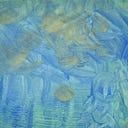Member-only story
Moses’ Horns: The Perils of Mistranslation
How strange.
I was reading up on the concept of terribilità in relation to Michelangelo.
Then it struck me that I had never really questioned why Moses is depicted with horns by Michelangelo. I suppose I just let it sink into my subconscious as M.’s typical flair for the hyper-dramatic in form. Maybe I had thought it was part of a stylized crown, the rest of which was out of sight in Moses’ thick hair. Rather than appearing Luciferian, the horns evoke creatures which existed in pagan stories. Pan had horns. Fauns and satyrs had horns. Cuckolds were also depicted with horns in the Middle Ages.
Michelangelo creates weird ambiguity by putting those horns on the religious leader’s head. It’s strong visual dissonance, but it adds a piquant quality that makes the work more interesting. You’re much more likely to remember the whole because of the unexpected nature of that part. I think Michelangelo might have been ahead of his time in understanding how memory works. This is why so many surreal commercials help you to remember the products or services they are advertising. A jolting image is applied to something bland your mind might have otherwise ignored as absolutely pedestrian. The two become linked in memory. Some Mr. or Ms. Clever Clogs has zapped you into storing something in your brain forever. Maybe Moses’ horns are just the Geico Gecko of 1513.
But what I’m throwing out here are just impressions and guesses. I searched for the answer.
